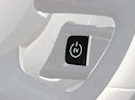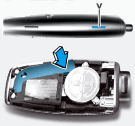Hyundai Symbols So, what is that light on your dashboard? What follows is easily the most complete list available of symbols and warnings that may appear in and on your car’s dashboard or instrument cluster. The following are warning lights and indicators found in vehicles built by Hyundai. Click the link to the right of …
Tag: Venue
Permanent link to this article: https://dashboardsymbols.com/2019/06/warning-lights-and-symbols-seen-in-hyundai-vehicles/
Hyundai and Genesis Videos: Help for Key Not Working
How to Open, Start and Replace Fob Batteries for Hyundai and Genesis Vehicles We have thirteen videos offering help to Hyundai, Kia and Genesis drivers for Key Not Working. Hyundai EVs This video covers Hyundai electric models exclusively. —————————————————————— 2020 and newer Sonata This covers Hyundai Sonata models 2020 and newer. ——————————————————————- Hyundai models, 2014-2019 …
Permanent link to this article: https://dashboardsymbols.com/2016/05/hyundaikia-video-help-with-dead-key-fobs/
Start a Hyundai, Genesis or Kia with a Dead Key Fob
How to Start a Hyundai, Genesis or Kia with a Dead Key Fob Starting Your Hyundai, Genesis or Kia First, if you’re still locked outside, click here for help getting in! Second, you can find video help here! Finally, if you need or want another manufacturer, click here. Hyundai, Genesis and Kia use no less …
Permanent link to this article: https://dashboardsymbols.com/2015/01/hyundai-and-kia-dead-key-fob-help-part-ii/
Open a Hyundai with a Dead Key Fob
How to Open a Hyundai with a Dead Key Fob First, if you are already inside, click here for help getting started! Second, you can find video help here! Finally, if you need or want another manufacturer, click here. Retrieving the mechanical key Hyundai has used a flip key key fob since 2015 and they …
Permanent link to this article: https://dashboardsymbols.com/2012/04/hyundai-and-kia-dead-fob-help/


